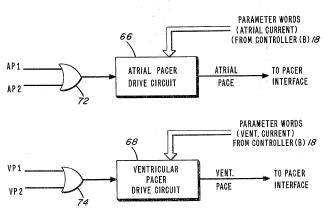
Cardiac Pacemakers (CPI) v. St. Jude Medical
(Fed. Cir. 2004).
CPI (Guidant) controls several patents relating to implantable cardiac defibrillators (ICDs) that are permanently installed under the skin, and that determine abnormal cardiac activity and treat that activity by delivering electrical shocks to the heart muscle in appropriate strengths. CPI charged St. Jude with infringement of two of these patents.
A jury found both patents valid and enforceable, but only one infringed. After trial, the district court granted St. Jude's motions for JMOL -- holding both patents invalid and not infringed. The court also granted a new trial (in the event of reversal) and awarded sanctions for witness misconduct. CPI appealed the judgment of invalidity and non-infringement.